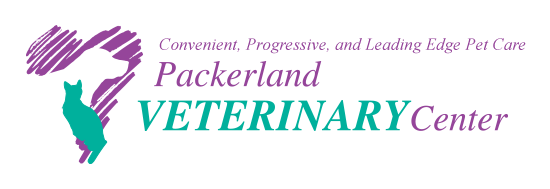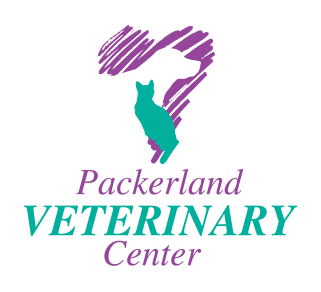


ASK US
Choosing a Pet Food – Questionnaire and Internet Resources
 Pet food is an under-regulated industry. Anyone can create a food recipe and slap a fancy label on it, making it sound like the best thing since (natural, organic, grain-free?) sliced bread. Unfortunately, the burden gets placed on the general public to discern whether or not the food is expensive because it is actually better for their pet, or whether it is just marketed better. Some companies are much better at marketing than they are at pet food creation, but it is the marketing that has caused a shift in public perception in the past 10 years. Moving towards healthier feeding options is extremely valuable, but the problem in an under-regulated industry is that it can be almost impossible to determine if one product is actually better than the next. Just because it is expensive, does not inherently make it better. Veterinarians are a fantastic source of information, but it can also be helpful to gather other knowledge. Talking to the food companies themselves and asking questions arms pet owners with additional information so they can make an informed decision.
Pet food is an under-regulated industry. Anyone can create a food recipe and slap a fancy label on it, making it sound like the best thing since (natural, organic, grain-free?) sliced bread. Unfortunately, the burden gets placed on the general public to discern whether or not the food is expensive because it is actually better for their pet, or whether it is just marketed better. Some companies are much better at marketing than they are at pet food creation, but it is the marketing that has caused a shift in public perception in the past 10 years. Moving towards healthier feeding options is extremely valuable, but the problem in an under-regulated industry is that it can be almost impossible to determine if one product is actually better than the next. Just because it is expensive, does not inherently make it better. Veterinarians are a fantastic source of information, but it can also be helpful to gather other knowledge. Talking to the food companies themselves and asking questions arms pet owners with additional information so they can make an informed decision. The printable questionnaire is based upon recommendations from certified veterinary nutritionists and below are some helpful tips on what to look for in their answers. There are lots of great foods available and it is important that you are comfortable with the answers you receive.
- A company should have a phone number readily available on their website so you are able to call and talk to a representative (not receive a call back within a few days). If they don't make it easy for you to contact them by phone, they will likely also not be responsive and available if your pet has a problem. The representative should be able to knowledgably answer your questions; bonus points if it doesn't sound like they are answering from a script!
- Looking at the label, it should say it is formulated for "all life stages" or will specify a specific life stage such as "growth" or "adult maintenance". "All life stages" foods will encompass ALL of the nutrient requirements for all stages including growing pets. Since the nutritional needs of a puppy are typically very different from your average adult or senior dog, it is generally recommended to feed for your pet's specific life stage.
- Foods can be created from a standard recipe and then sold without ever having been fed to an animal OR can be created and then fed via certified AAFCO feeding trials prior to going to market. Specific parameters about the pets are measured throughout the trial and requirements must be met before the feed can be certified. While not all-encompassing for every situation, food trials do show an effort to prove their food is well tolerated prior to distribution. If they are meeting AAFCO nutrient profiles without a feeding trial, it is best if they show this by actual analysis of the finished product.
- Ideally, each food company would have a certified veterinary nutritionist (not just a veterinarian) on staff full time. This person (or group of people) would oversee the entire process and would be available to field concerns should they arise. Additionally, the company should be able to tell you who formulates their food recipes and what their credentials are.
- Quality and consistency are extremely important within the pet food industry. We have seen some companies have to repeatedly deal with accusations of false label claims because their suppliers either were not honest with them about what they were providing or, worse, the company really didn't have quality suppliers in the first place. Ultimately though, it is the responsibility of the pet food company to ensure that what they say is in the food is actually what is there. Therefore, testing of raw product from the supplier is imperative. Ideally, the food company would also have an outside lab test their products prior to distribution. This is expensive and time-consuming, but helps to avoid recall situations. Having US based suppliers also helps to avoid less quality ingredients coming from other countries where policies may be less stringent.
- The topic of manufacturing is also incredibly important. When a food company owns and operates their own facilities, it may be more expensive but it gives them much more control over their final product. Some companies share manufacturing facilities which opens up the possibilities of cross-contamination from other brands and, potentially, less quality materials and supplies. Many recalls have occurred because of shared manufacturing facilities and is easily avoidable.
- It is important for pet foods to be digestible so the pet is able to actually utilize the nutrients found within it. Having a specific number for each nutrient shows they put effort into knowing exactly what is in their foods, not just a range.
- Some companies invest in research in an effort to ensure their foods are healthy and appropriate. If this research is peer-reviewed, the data and results have been evaluated by professionals outside of the company. Research is expensive and shows a company has motivations of more than just selling food.
When you call, take notes and compare different companies. Have a specific pet in mind (age, lifestyle, breed) so you can ask for specific recommendations and information from each company. You may find that several of the brands you recognize may actually be part of one parent company and those answers will generally be similar.
The internet can be a great source of information, but must be used with extreme care. Your veterinarian is the ideal starting resource for food recommendations. They know your pet personally and are genuinely concerned about their health and wellbeing. For further information we recommend sticking to reliable sources that are backed by certified veterinary nutritionists rather than opinion-based resources. Also be aware that websites ranking foods based upon INGREDIENTS do not necessarily reflect the NUTRIENT value of those foods. These websites should be used with caution and preferably in conjunction with information from a nutritionist, if at all.
Recommended internet resources:
American College of Veterinary Nutrition (ACVN)http://www.acvn.org/frequently-asked-questions/
The World Small Animal Veterinary Association: Global Nutrition Committee (WSAVA)
Choosing a food: http://www.wsava.org/sites/default/files/Recommendations%20on%20Selecting%20Pet%20Foods.pdf
Dogs: http://www.wsava.org/WSAVA/media/Arpita-and-Emma-editorial/The-Savvy-Dog-Owner-s-Guide-to-Nutrition-on-the-Internet.pdf
Cats: http://www.wsava.org/WSAVA/media/Arpita-and-Emma-editorial/The-Savvy-Cat-Owner-s-Guide-to-Nutrition-on-the-Internet.pdf
UC Davis College of Veterinary Medicine – Nutrition Support Services:
http://www.vetmed.ucdavis.edu/vmth/small_animal/nutrition/index.cfm
Choosing a Pet Food – Questionnaire
(Click Here for a Printable Version of These Questions)BRAND:___________________________________________ Date:_______________
Phone Number:_______________________________
Phone Interview Questions
1. Do you employ a full time qualified veterinary nutritionist? Are they available for consultations/questions?
2. Who formulates your foods (creates the recipe)? What are their credentials?
3. Are your diets tested using AAFCO feeding trials or by formulation to meet AAFCO nutrient profiles? If the latter, do they meet the nutrient profiles by formulation or by analysis of the finished product?
4. What specific quality control measures do you take to ensure the quality and consistency of your product? Who supplies your ingredients? Where from?
5. Where are your foods produced/manufactured? Do you own this facility? Are other foods made there?
6. Can you provide a complete product nutrient analysis for (specific food of interest) including digestibility values? (This is not just the guaranteed analysis which is only minimum/maximum.) You should be able to ask for any nutrient and get an exact number given on an energy basis (kilocalories/100gr for example), not on an "as fed" or "dry matter" basis.)
7. What kind of research on your products has been conducted, and are the results published in any peer-reviewed journals?



